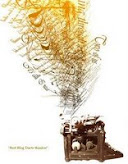That being said, I remember a project I did when I was in elementary school that was a modified fresco project, using plaster of Paris. If you are really interested in creating your own fresco, try this.
Supplies Needed:
Plaster of Paris
Watercolor Paints
Paintbrush
Clay (recipe below)
Thin cardboard (cereal boxes)
Purchase some plaster of Paris and mix according to the instructions on the package. You’ll want to let it set for a few minutes before pouring it into a mold. I recommend making a mold out of clay and thin cardboard.
Follow the directions for clay:
Supplies Needed:
2 Cups Flour
1 Cup Salt
1 Cup Water
1 1/2 Tablespoons Vegetable Oil
Mix the dry ingredients in a bowl. Slowly stir in the water and the oil until there are no more lumps. The mixture should be smooth. That’s all there is to it; you have homemade clay.
Mold the clay into a thin, smooth sheet (about half an inch thick). Cut some strips of thin cardboard (try using a cereal box) and stick them into the clay to create a wall. You can make your fresco any shape by just arranging the cardboard into that shape. Make sure to tape the edges where the pieces of cardboard meet. If you want your fresco to be rectangular, just cut the two large sides off the box and use the remaining pieces.
Alternatively, you could use a tupperware container as a mold but you may destroy the container and will certainly not want to keep food in it again.
Pour the plaster of Paris into the mold and let it set. Plaster of Paris will heat up as it sets but it will not be dangerous; it will only reach about 80 degrees. If you want to paint on the plaster as it dries feel free to try it but wait until it hardens a bit. If you try to paint on it while it still looks like pancake batter your paintbrush will sink in and leave blobs of paint in the plaster of Paris.
To turn your fresco into a wall hanging, cut a piece of string and bury the two ends in the plaster before it has fully set. You'll be able to hang the fresco from this string once the plaster of Paris has set.
When I did this project in art class in elementary school, the art teacher created the molds ahead of time at let them dry completely. This allowed us to draw the outline of our picture onto the dried plaster with a pencil. The project also took several hours to complete and art class was one hour at the longest. We couldn’t have finished it before the plaster of Paris dried.
Maybe you should make two molds and paint on one as it hardens and the other one after it hardens. Let me know which works best.
Return to main page.








1 comment:
Thanks for this description on how to do a fresco with children. I linked it up on my blog to go with a related book--Pompeii Lost and Found.
Post a Comment